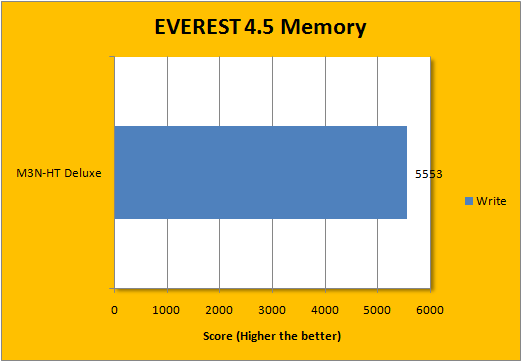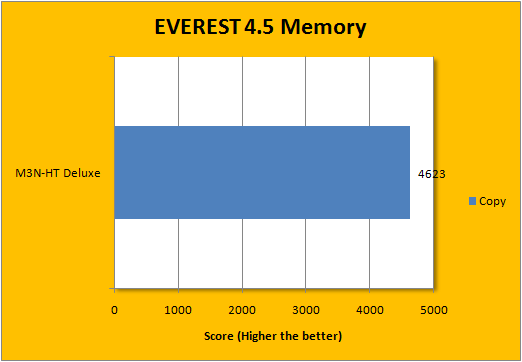Page 9 - Benchmark: EVEREST Memory
About EVEREST Ultimate Edition
EVEREST Ultimate Edition is an industry leading system diagnostics and benchmarking solution for enthusiasts PC users, based on the award-winning EVEREST Technology. During system optimizations and tweaking it provides essential system and overclock information, advanced hardware monitoring and diagnostics capabilities to check the effects of the applied settings. CPU, FPU and memory benchmarks are available to measure the actual system performance and compare it to previous states or other systems. Furthermore, complete software, operating system and security information makes EVEREST Ultimate Edition a comprehensive system diagnostics tool that offers a total of 100 pages of information about your PC.
Memory benchmarking
Memory read and write speed, memory latency measurement to stress the memory and cache subsystem, including references list to compare actual performance with other systems.
From: Developer's Page



We've tested the memory performance in "Unganged" mode -- the reason behind this is that AMD CPUs have an integrated memory controller; resulting in a direct CPU access to system memory. Called "Ganged" mode by AMD, dual channel configuration means that memory access is in a unified way with 128-bit wide access path. "Unganged" or single channel mode allows the CPU to access two blocks of memory with 64-bit wide access each. Generally speaking, in multithreaded applications with multicore CPUs, this separation allows additioanl parallelism that enhances overall performance.
Page Index
1. Introduction, Features, and Specifications
2. Bundle, Chipset, BIOS
3. A Closer Look, Board Layout
4. Test System; Benchmark: 3DMark06
5. Benchmark: PCMark05
6. Benchmark: Cinebench R10, SuperPI 1M
7. Benchmark: EVEREST CPU
8. Benchmark: EVEREST FPU
9. Benchmark: EVEREST Memory
10. Benchmark: EVEREST Memory Latency, HDTach 3.0.1.0
11. Onboard Sound (RMAA 6.06) Analyzation
12. Asus Express Gate Onboard Linux
13. Overclocking and Conclusion





